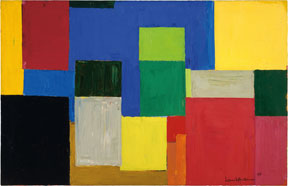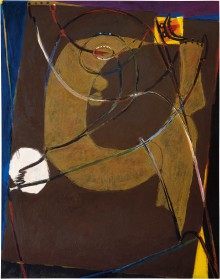Hans Hofmann
Fall Euphony 1959

© 2014 The Renate, Hans & Maria Hofmann Trust. Reproduction of this image, including downloading, is prohibited.
“The whole world, as we experience it visually, comes to us through the mystic realm of color.”
-Hans Hofmann
Hans Hofmann was born in Weißenburg, Bavaria, Germany, on March 21, 1880.
He was something of a child prodigy, excelling in mathematics, sciences and music, as well as drawing, from a young age. At the age of sixteen, Hofmann was made Director of the Public Works of the State of Bavaria, and his mathematical skills led to several scientific inventions.
In 1904, Hofmann moved to Paris and studied art, attending night classes at the École de la Grande Chaumière and taking courses at the Académie Colarossi. Hofmann later returned to Germany and began to focus on teaching art. He opened the School of Fine Arts in Munich in 1915, and after moving to New York City in the 1930’s, he established the Hans Hofmann School of Fine Arts in New York in 1933 and also created a summer school in Provincetown, Massachusetts in 1935. Many notable artists, including Lee Krasner, Helen Frankenthaler, Charles and Ray Eames, Red Grooms, Joan Mitchell and Larry Rivers were his students. Hofmann stated his philosophy of art in the prospectus of his Munich school: “Art does not consist in the objectivized imitation of reality. Without the creative impulse of the artist, even the most perfect imitation of reality is a lifeless form…”
In 1958, Hofmann gave up his forty-year teaching career to devote himself to painting. In his late works, such as Fall Euphony, he dedicated himself to the explorations of color, space and form. In Fall Euphony, one can observe his style of quieter, heavily paint-laden, constructed rectangles. During this period, he also created highly energized and gestured drip paintings.
Hans Hofmann was one of the twentieth century’s most influential art teachers and became a beacon for aspiring young artists in America. His methods influenced several generations of painters.
Hofmann died on February 17, 1966, in New York City.
-Abhi Singh






